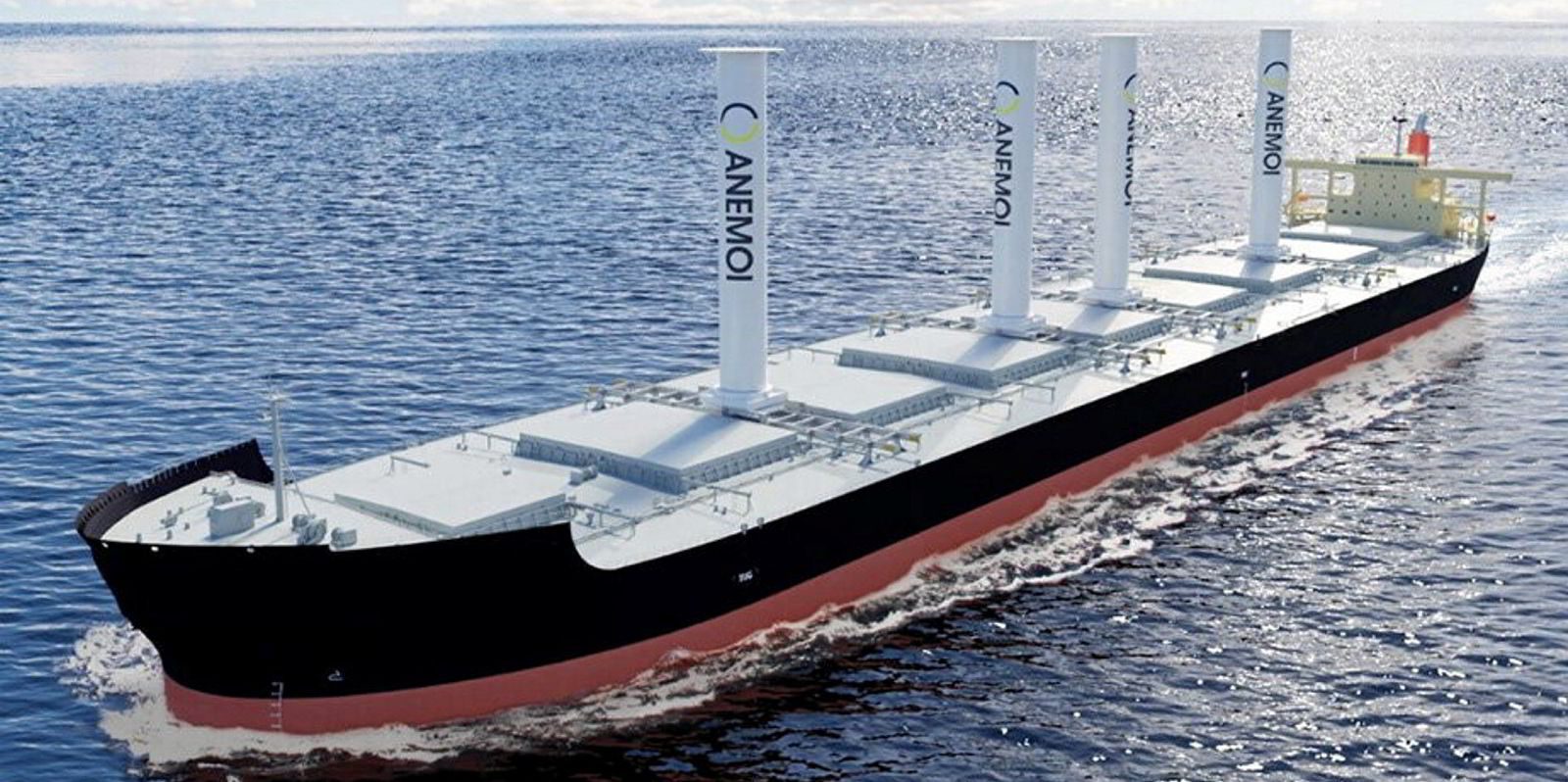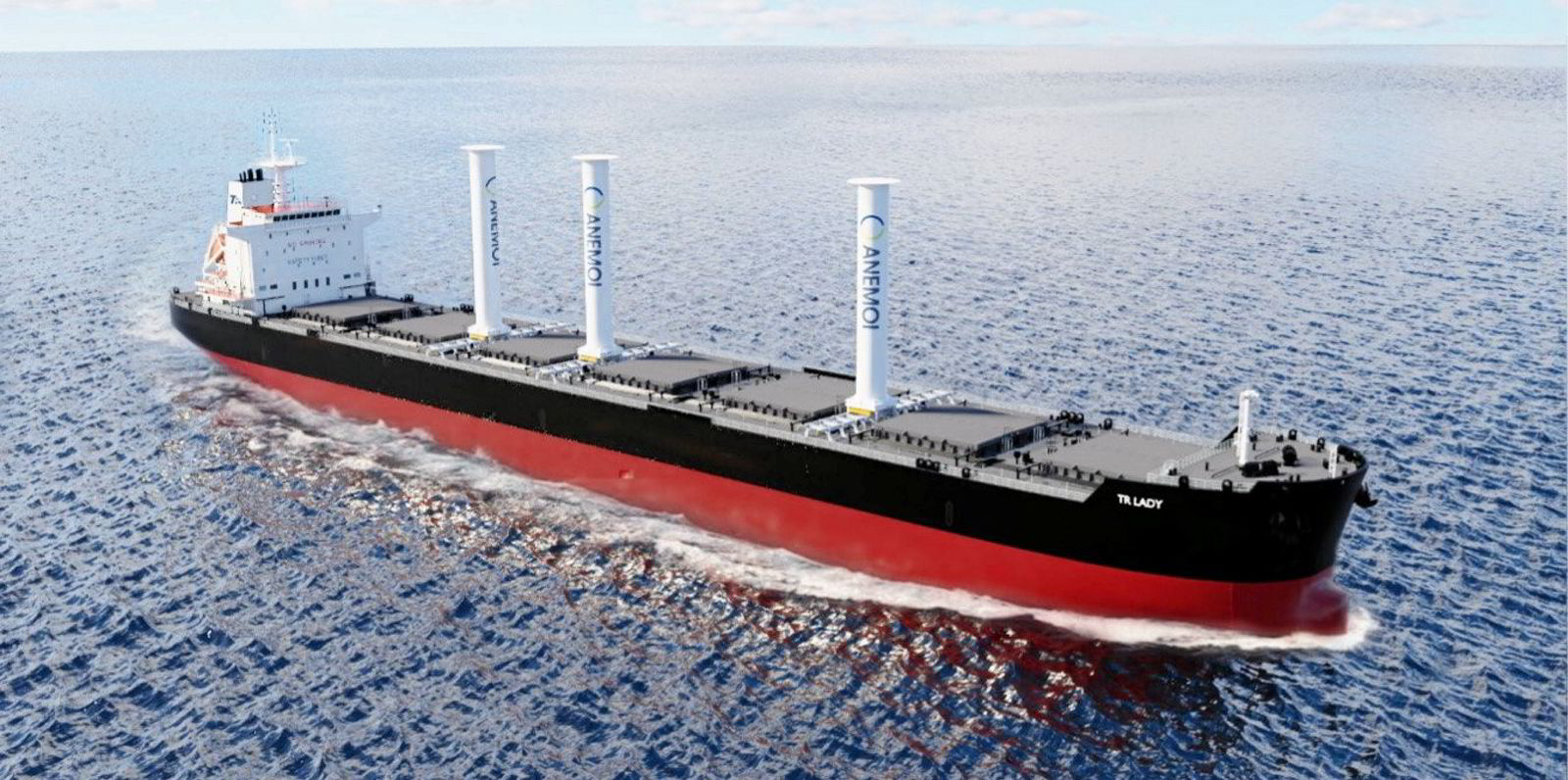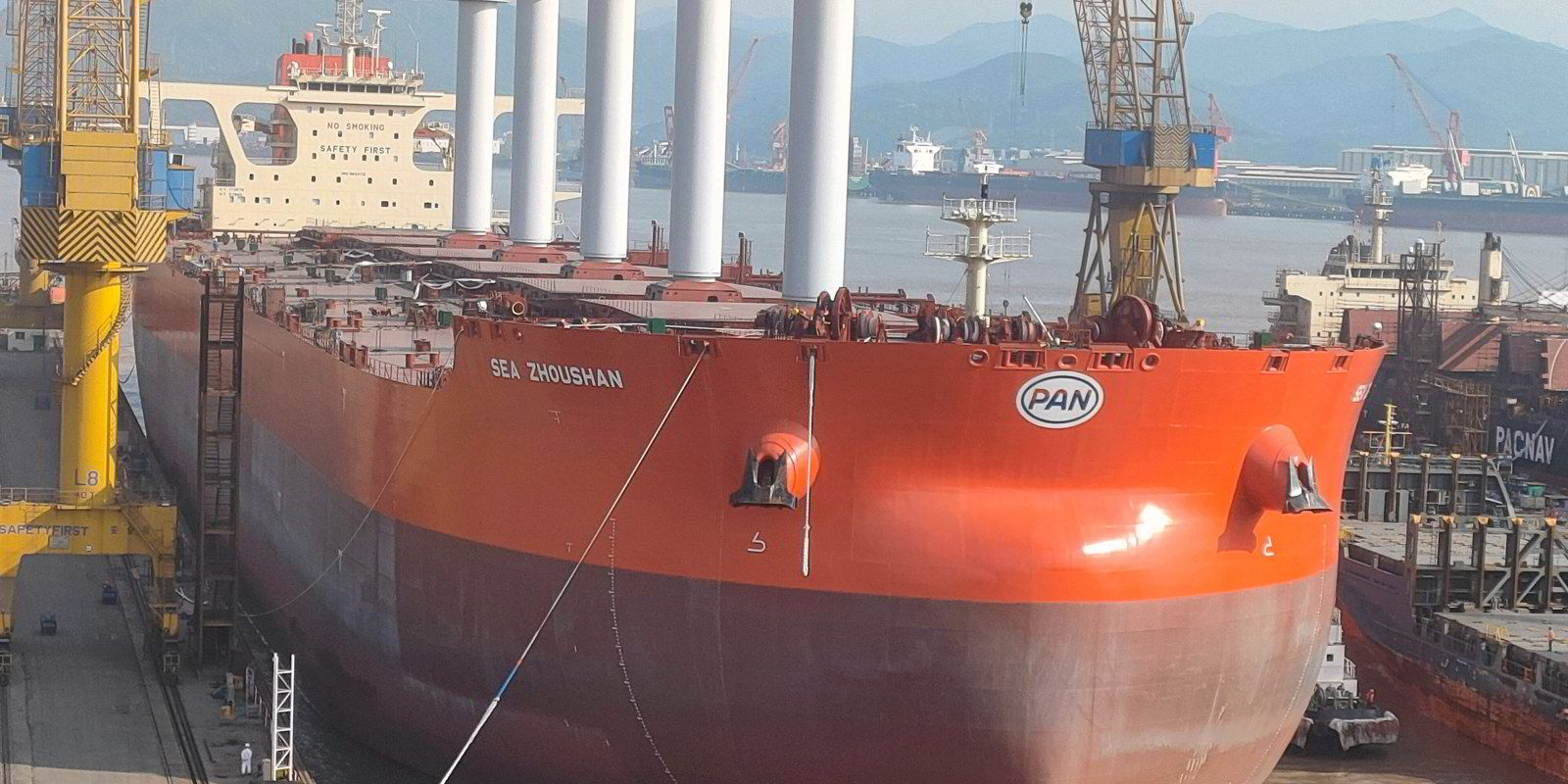Mitsui OSK Lines (MOL) has teamed up with mining giant Vale to study the potential for rotor sails on large bulk carriers.
The study will examine how the green technology can help reduce greenhouse gas (GHG) emissions on a 200,000-dwt vessel while underway.
The Japanese shipowning giant has opted for the rotor sail design developed by UK-based company Anemoi Marine Technologies.
MOL said the joint study team will "examine and verify" the number of rotor sails that would need to be installed and what GHG reductions are achieved.
The shipowner did not disclose the timeline for the study or when it is due to begin.
"The rotor sail produces propulsive force as the wind generates differential pressure around the slewing rotor while the vessel is underway," MOL said.
"It offers high efficiency because the natural energy of the wind directly propels the vessel rather than being converted to electricity, for example."

This is the latest modern sail technology to be trialled by MOL.
In December 2020, it ordered a panamax bulker newbuilding at Oshima Shipbuilding that will feature a hard-sail wind-power propulsion system, dubbed Wind Challenger, in partnership with domestic power company Tohoku Electric Power.
Propulsive force
Wind Challenger is a telescoping hard sail that is designed to convert wind energy into propulsive force and has been under development for close to a decade.
It was started in 2009 as an industry/academic joint research project led by the University of Tokyo, but has since been developed by a group of Japanese companies including MOL and Oshima Shipbuilding.
In May 2021, Anemoi agreed a deal with Tufton Investment Management to install a sliding rotor sail system on its 82,000-dwt bulker TR Lady (built 2017).
The TR Lady will be retrofitted during a scheduled dry docking in China, with completion likely to be in the middle of 2022.
In January, Oldendorff Carriers announced it was launching a joint development project with Anemoi that could see a folding rotor sail power system ready for its bulker fleet by 2022.
Vale has already fitted rotor sails from rival manufacturer Norsepower to one of its latest VLOC newbuildings, as TradeWinds has reported.
Five 24-metre-high tilting rotors were installed on the Pan Ocean-owned, 325,000-dwt guaibamax vessel Sea Zhoushan in what was described as one of the largest such installations to date.
They are targeted to cut fuel consumption and emissions by up to 8% on routes between Brazil and China, amounting to a saving of 3,400 tonnes of CO2 per year.





